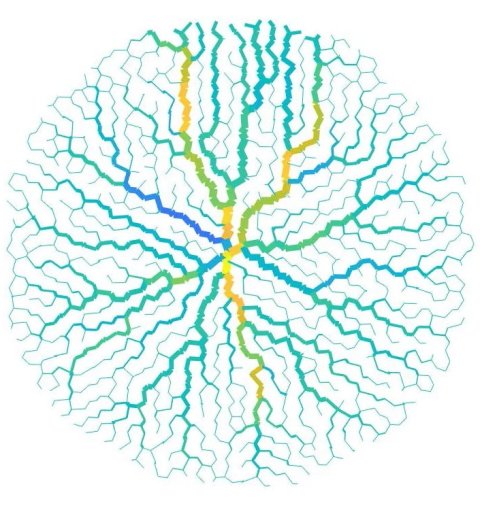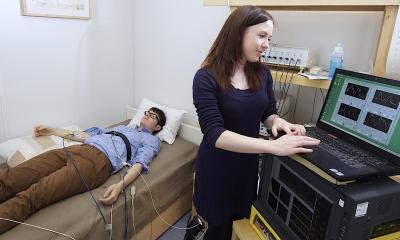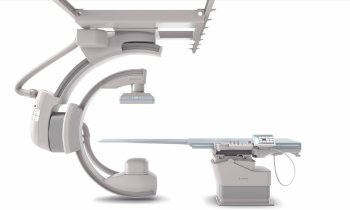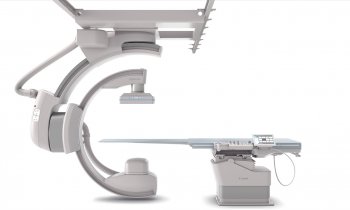News • Vascular network research
How blood vessels 'remember' a stroke
Networks adapt over time and in this way form a kind of memory. This is the key finding of a new study by researchers from the Max Planck Institute for Dynamics and Self-Organization in Göttingen and the Technical University of Munich. They show that the structure of blood vascular network is dynamic and can adapt to external factors. In particular, the scientists found that rarely used connections are weakening more and more until they disappear eventually.

© MPI-DS / Alim
The vascular system within our body provides a constant flow of nutrients, hormones and other resources, thus ensuring efficient transport. The researchers Komal Bhattacharyya, David Zwicker, and Karen Alim investigated in which way such a network is able to adapt and change over time. Using computer simulations, they modelled the network and identified adaptation rules for its connections. “We found that the strength of a connection within a network depends on the local flow,” explains Karen Alim, corresponding author of the study, which was published in Physical Review Letters. “This means that links with a low flow below a certain threshold will decay more and more until they eventually vanish,” she continues. As the amount of biological material to build the vascular system is limited and should be used in an efficient way, this mechanism offers an elegant way to streamline the vascular system.
The network prefers to reroute the flow through existing stronger connections instead of re-growing weaker connections – even if the flow would require the opposite
Komal Bhattacharyya
Once a connection has become very weak due to a low flow rate, it is very difficult to recover that connection. A common example for this is the blockage of a blood vessel which in a bad case even might lead to a stroke. During a stroke some blood vessels in a certain brain region become very weak due of the blockage of blood flow. “We found that in such a case, adaptations in the network are permanent and are maintained after the obstacle is removed. One can say that the network prefers to reroute the flow through existing stronger connections instead of re-growing weaker connections – even if the flow would require the opposite”, explains Komal Bhattacharyya, principal author of the study.
With this new understanding of network memory, the researchers can now explain that blood flow permanently changes even after successful removal of the clot. This memory capability of networks can also be found in other living systems: the slime mold Physarum polycephalum uses its adaptive network to navigate its environment based on imprints by food stimuli.
Source: Max Planck Institute for Dynamics and Self-Organization
18.07.2022











